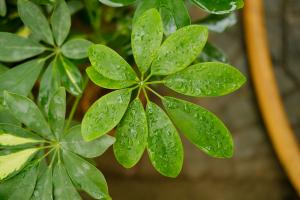What Fertilizer Do I Use on a Rubber Tree Plant?
When it comes to taking care of your rubber tree plant, providing the right type of fertilizer is essential to ensure the growth and vitality of your plant. In this article, we'll discuss the kind of fertilizer that is best suited for rubber tree plants to help you maintain the health of your plant.
Understanding Rubber Tree Plants
The rubber tree plant, scientifically known as Ficus elastica, is a common houseplant that is native to India and South Asia. This plant is a popular choice for indoor decoration because of its attractive foliage, tall stature, and easy maintenance. Rubber plants are known for their thick, glossy leaves and can grow up to 100 feet tall in their natural habitat. They belong to the fig family and are excellent air purifiers, making them a perfect addition to any home.
The Importance of Fertilizing Rubber Tree Plants
Like all plants, rubber tree plants require essential nutrients to grow and thrive. These nutrients include nitrogen, phosphorous, and potassium. However, soil nutrients can become depleted over time, especially in indoor environments where there is limited access to the available soil. This is why fertilizing your rubber tree plant is essential to provide the necessary nutrients it requires for growth, color, and health.
Choosing the Right Fertilizer for Rubber Tree Plants
When it comes to selecting the correct fertilizer for your rubber tree plant, it is essential to understand the specific fertilizer requirements and the appropriate fertilization schedule. Rubber tree plants generally require a balanced fertilizer that is formulated with equal parts of nitrogen, phosphorous, and potassium. A balanced fertilizer will provide all the essential nutrients that your plant needs to grow and remain healthy.
The nitrogen component of the fertilizer is responsible for promoting leaf growth and improving the plant's overall appearance. It is essential to maintain the recommended nitrogen levels because too much can lead to weak branches and leaves, while too little can cause stunted growth and yellowing of leaves.
The phosphorous component of the fertilizer is essential for root development and improved flower quality. It will help your plant to create a better root system, which will make it more robust and better able to absorb water and other nutrients from the soil.
Potassium is essential for enhancing the overall health of your rubber tree plant. It strengthens the plant's immune system, improves drought tolerance, and helps with photosynthesis. Potassium will also make your plant more resistant to pests and diseases.
Fertilizing Rubber Tree Plants
When fertilizing your rubber tree plant, it is essential to follow the instructions on the package carefully. Over-fertilization can cause damage to your plant, and under-fertilization can cause yellowing or withering of the leaves. Generally, it's recommended to fertilize your rubber tree plant every two weeks during the growing season (spring and summer) and every four to six weeks during the dormant season (fall and winter). Avoid fertilizing during the winter months when growth is minimal.
Conclusion
Providing the right fertilizer is essential to ensure the growth and vitality of your rubber tree plant. Use a balanced fertilizer that contains equal amounts of nitrogen, phosphorous, and potassium, and follow the recommended feeding schedule. By choosing the right fertilizer and ensuring consistent fertilization for your plant, you can help it grow and thrive for years to come.

 how many times do yo...
how many times do yo... how many planted tre...
how many planted tre... how many pine trees ...
how many pine trees ... how many pecan trees...
how many pecan trees... how many plants comp...
how many plants comp... how many plants can ...
how many plants can ... how many plants and ...
how many plants and ... how many pepper plan...
how many pepper plan...





























